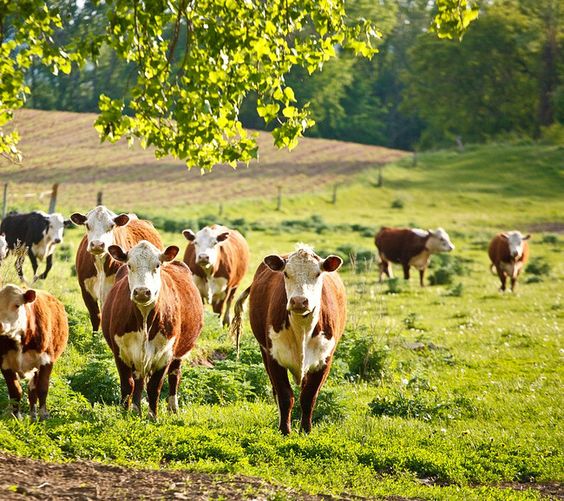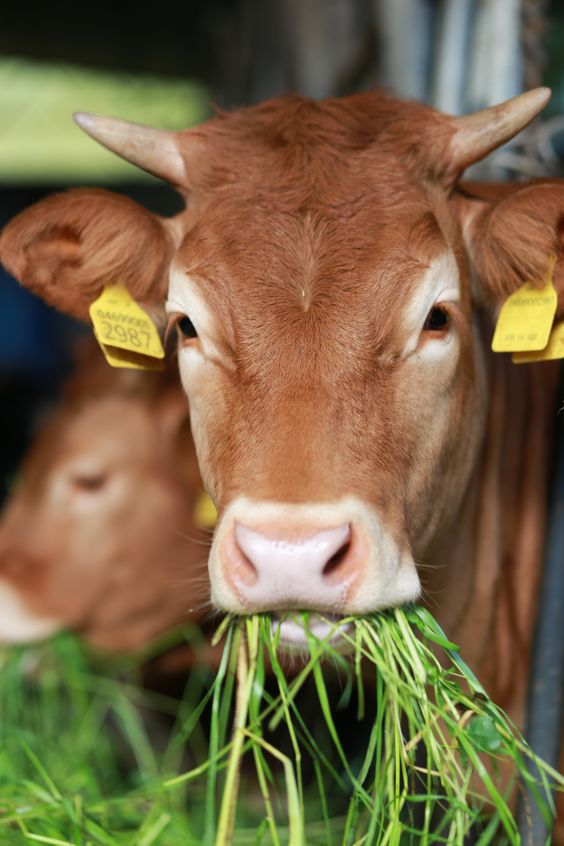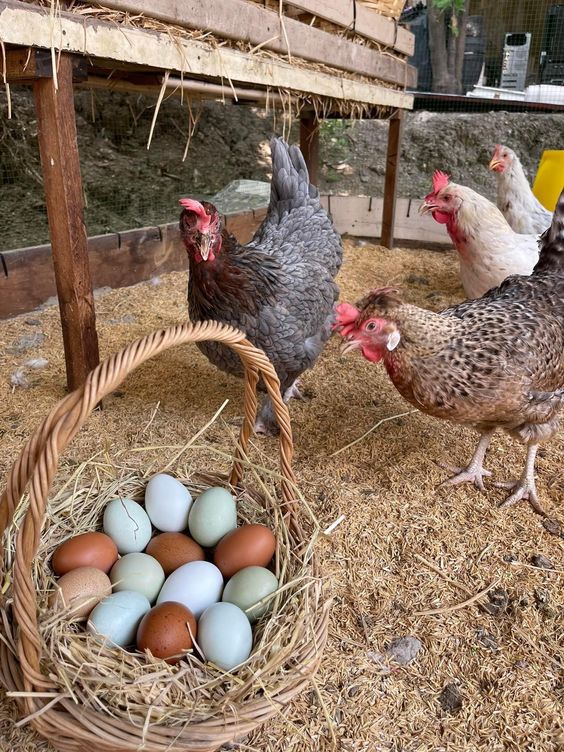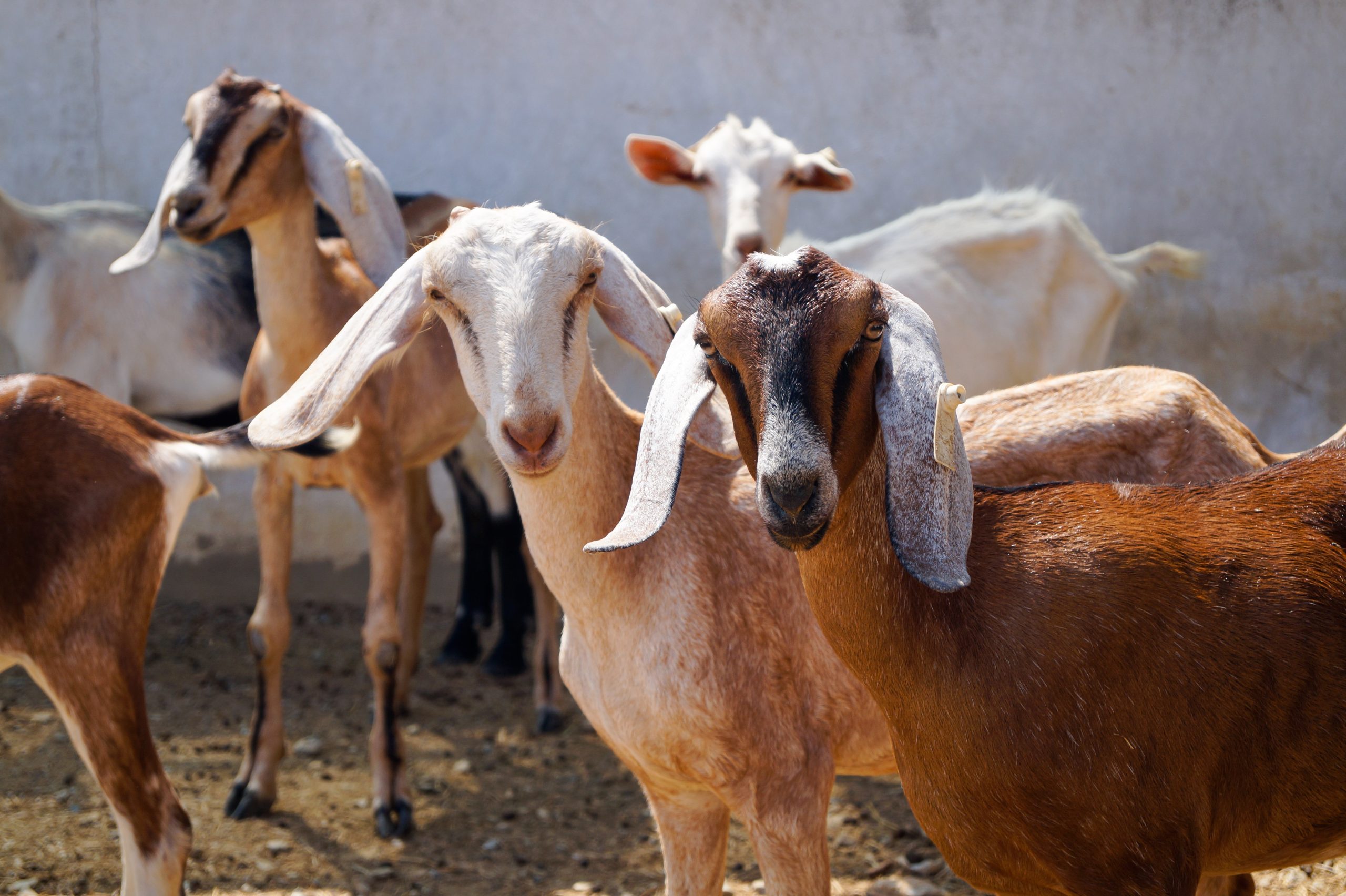Livestock Farming: A Comprehensive Guide to Raising Animals for Profit and Sustainability
Livestock farming, the practice of raising animals for various purposes, is a cornerstone of human civilization. From providing sustenance to contributing to the economy, livestock have played an indispensable role in shaping societies throughout history. This comprehensive exploration delves into the multifaceted world of livestock farming, examining its significance, practices, challenges, and potential for sustainable growth.
Defining Livestock Farming
Livestock farming, also known as animal husbandry, involves the breeding, rearing, and management of domesticated animals to produce a wide variety of products and services essential to human life. These animals, referred to collectively as livestock, include cattle, sheep, goats, pigs, poultry, and horses, among others. Each type of livestock offers unique contributions to agriculture and human needs.
The primary purpose of livestock farming varies across regions and cultures, but some common objectives include the production of meat, milk, and eggs, which serve as crucial sources of protein and nutrition. Dairy cattle, for instance, are primarily raised for milk production, while beef cattle are raised for their meat. Chickens, a staple in poultry farming, are valued for both their meat and egg production. Beyond food, livestock also provide wool and leather, derived from animals like sheep and cattle, which are used in clothing, textiles, and various industrial products.
The Importance of Livestock Farming
Livestock farming plays a crucial role in global agricultural systems, contributing significantly to food security, economic development, and the livelihoods of rural populations. Its importance is vast, touching multiple aspects of society, the environment, and economies.
Food Security: Livestock provides a steady supply of essential nutrients such as proteins, fats, vitamins, and minerals. These nutrients are critical for human health, particularly in developing countries where meat, milk, and eggs form the cornerstone of many diets. Livestock products are highly nutritious, offering complete proteins that are easily digestible and crucial for growth, development, and overall well-being. This makes livestock farming vital in combating malnutrition and hunger, particularly in regions with limited access to diverse food sources.
Economic Growth: The livestock sector is a major contributor to economic growth, especially in rural areas. It creates jobs for millions of people, not only in animal rearing but also in related industries such as feed production, veterinary services, processing, and transportation. Livestock farming contributes significantly to the Gross Domestic Product (GDP) of many nations, driving trade and supporting local economies. By offering a consistent income stream, it provides financial stability and opportunities for economic mobility for small-scale farmers and large commercial enterprises alike.
Livelihoods: Livestock farming is often a lifeline for farmers and herders, serving as their primary source of income and subsistence. In times of crop failure, livestock can serve as a financial safety net, providing both a means of survival and a path to recovery. Moreover, livestock ownership can improve household resilience against economic shocks.
Input for Agriculture: Manure from livestock farming is a rich organic fertilizer, essential for enhancing soil fertility and improving crop yields. Integrating livestock into crop rotations also helps maintain soil health, suppressing pests and diseases in sustainable agricultural systems.
By-Products: Livestock farming produces valuable by-products such as hides, wool, bones, and feathers, which have diverse applications in industries like textiles, pharmaceuticals, and manufacturing. These by-products increase the overall value of livestock farming, contributing to the global economy while reducing waste.

Goals of Livestock Farming
The goals of livestock farming are varied, depending on factors such as geographic location, cultural traditions, and market dynamics. Despite these differences, several common objectives guide livestock farmers worldwide. These goals are crucial for ensuring the long-term success and sustainability of livestock farming systems.
Increased Productivity: One of the primary goals of livestock farming is to maximize productivity. Farmers aim to improve the efficiency of livestock production by implementing better breeding techniques, optimized nutrition, and advanced management practices. Selective breeding, for instance, allows farmers to enhance desirable traits in livestock, such as faster growth rates or higher milk yields. Additionally, improved feed formulations ensure that animals receive the nutrients they need to grow efficiently and remain healthy, ultimately increasing output per unit of input. The goal is to produce more meat, milk, or eggs while minimizing costs and resources used.
Improved Quality: As consumer preferences evolve, there is increasing demand for high-quality livestock products. Farmers strive to meet these expectations by improving the quality of the products they produce. This might include breeding livestock for better meat tenderness, richer milk composition, or larger egg sizes. Quality enhancements not only increase the appeal of livestock products to consumers but also allow farmers to target premium markets where they can command higher prices. This focus on quality is particularly important in regions with well-established markets for specialty meats, dairy products, and other animal-derived goods.
Sustainable Production: Sustainability is becoming a major focus in modern livestock farming. Farmers are adopting environmentally friendly practices to reduce the ecological footprint of their operations. This includes implementing waste management systems to reduce pollution, conserving water and soil resources, and integrating renewable energy solutions. Sustainable livestock farming practices aim to minimize greenhouse gas emissions and protect ecosystems while maintaining productivity. This approach ensures that livestock farming can continue to meet global food demands without depleting natural resources.
Animal Welfare: Ensuring the well-being of livestock is another central goal. Humane treatment of animals involves providing proper housing, nutrition, and healthcare. This includes giving animals adequate space, access to clean water, and ensuring they are handled without unnecessary stress or harm. High standards of animal welfare are not only ethical but also contribute to improved productivity and product quality, as healthier and less-stressed animals tend to perform better.
Economic Viability: Livestock farming must also be economically viable for farmers. The goal is to generate sufficient income to cover production costs, pay for labor, and provide a reasonable return on investment. Efficient resource use, minimizing waste, and managing costs are critical to achieving this objective. Profitability ensures that livestock farming remains a sustainable livelihood for farmers and a reliable food source for global populations.
Livestock Farming Systems
Livestock farming systems are diverse, shaped by factors such as climate, geography, available resources, and cultural traditions. These systems determine how livestock are raised, the intensity of production, and the relationship between livestock and the environment. The most common types of livestock farming systems include pastoralism, ranching, mixed farming, intensive farming, and organic farming.
Pastoralism: Pastoralism is a traditional livestock farming system practiced in arid and semi-arid regions, where water and vegetation are sparse. In this system, nomadic or semi-nomadic herders move their livestock across large landscapes in search of grazing pastures and water. Pastoralism is often found in regions like sub-Saharan Africa, the Middle East, and Central Asia. Livestock, such as cattle, sheep, and goats, are raised primarily on natural pastures, making this system highly dependent on seasonal patterns and the availability of natural resources. Although pastoralism provides an important livelihood for millions of people, it is increasingly challenged by climate change and competition for land.
Ranching: Ranching is an extensive livestock farming system that involves raising animals on large tracts of land, typically in regions with low rainfall and vast open spaces, such as the Americas and Australia. Ranching is characterized by low stocking rates, where animals are spread over wide areas to graze. This system is often used for raising cattle, horses, and sheep. While ranching requires minimal inputs in terms of feed, the environmental impact of overgrazing and land degradation can be significant if not properly managed.
Mixed Farming: Mixed farming is a highly integrated system where livestock farming is combined with crop production. In this system, livestock provide manure that is used to fertilize crops, while crops supply feed for the animals. Mixed farming is widely practiced in both developing and developed regions and is considered a sustainable approach because it enhances soil fertility and reduces the need for synthetic fertilizers. Livestock such as cows, chickens, and pigs are commonly integrated into this system, making it a resource-efficient form of farming that promotes biodiversity and productivity.
Intensive Farming: Intensive livestock farming focuses on maximizing output by raising large numbers of animals in confined, controlled environments. This system is common in industrialized nations and involves specialized feeding regimens, high-density animal housing, and the use of advanced technologies to monitor animal health and productivity. Intensive farming is typically used for poultry, pigs, and dairy cattle, aiming to meet high consumer demand for meat, milk, and eggs. While this system increases productivity and reduces land use, it also raises concerns about animal welfare, environmental pollution, and the overuse of antibiotics.
Organic Farming: Organic livestock farming follows strict principles aimed at promoting environmental sustainability and animal welfare. In this system, animals are raised on organic feed, without the use of synthetic pesticides, fertilizers, or antibiotics. Organic farming emphasizes free-range practices, allowing livestock to graze and exhibit natural behaviors. This system focuses on maintaining soil health, water conservation, and reducing the environmental impact of farming. Organic livestock products, such as organic milk, meat, and eggs, often command higher prices in the market due to the perceived health benefits and ethical considerations associated with organic farming.

Challenges in Livestock Farming
Livestock farming is a vital part of global agriculture, but it faces several significant challenges. These challenges can affect the health of animals, economic stability for farmers, and the sustainability of livestock production systems. Addressing these issues is crucial to ensuring the long-term viability of livestock farming.
Disease and Parasites: One of the most pressing challenges in livestock farming is the threat of diseases and parasites. Livestock are vulnerable to a wide range of infectious diseases, such as foot-and-mouth disease, avian flu, and bovine tuberculosis. These diseases can spread rapidly, leading to high mortality rates and devastating economic losses. Parasites, including ticks and worms, also affect livestock health by causing weight loss, reduced productivity, and, in severe cases, death. Managing diseases and parasites often requires significant investment in veterinary care, vaccines, and biosecurity measures, placing a financial burden on farmers.
Climate Change: Climate change is another major challenge that impacts livestock farming in various ways. Changing weather patterns, including increased frequency of droughts, floods, and extreme temperatures, affect feed availability and water resources. Droughts can lead to poor pasture growth and reduced crop yields for animal feed, while floods can destroy grazing lands and infrastructure. Livestock are also directly affected by heat stress, which can reduce fertility, lower milk production, and increase susceptibility to disease. Farmers are increasingly required to adapt their practices to mitigate the effects of climate change, which may involve additional costs and resource management.
Market Fluctuations: Livestock farmers face financial instability due to market fluctuations. Price volatility in the global market for meat, dairy, and other livestock products can significantly affect farmers’ income. Factors such as changes in consumer demand, international trade policies, and competition can lead to unpredictable price swings, making it difficult for farmers to plan their operations and manage cash flow. In times of low prices, farmers may struggle to cover their production costs, while during price spikes, consumers may turn to alternative, cheaper protein sources, reducing demand for livestock products.
Environmental Concerns: Livestock farming is often associated with environmental issues, particularly its contribution to greenhouse gas emissions, water pollution, and deforestation. Methane emissions from ruminants such as cattle contribute significantly to global greenhouse gas emissions, exacerbating climate change. In addition, livestock farming can lead to water pollution from runoff containing manure, antibiotics, and other pollutants, affecting local water supplies and aquatic ecosystems. The expansion of livestock farming into forests and grasslands also contributes to habitat destruction and loss of biodiversity. As a result, there is growing pressure on the industry to adopt more sustainable and environmentally friendly practices.
Animal Welfare Issues: Public concern over animal welfare has increased in recent years, putting additional pressure on livestock farmers to improve the living conditions and treatment of animals. Practices such as confinement in small spaces, routine use of antibiotics, and inhumane handling methods have drawn criticism from animal rights groups and consumers. To address these concerns, many farmers are being encouraged or required to adopt higher standards of animal welfare, such as providing more space for animals, access to pasture, and humane slaughter practices. However, these changes often come with increased production costs and logistical challenges for farmers.
Opportunities and Future Directions in Livestock Farming
While livestock farming faces several challenges, it also presents significant opportunities for growth, innovation, and sustainability. By leveraging technology, developing new products, and improving practices, the livestock sector can meet rising global demand for animal products while addressing environmental and social concerns. Key areas of focus for the future of livestock farming include technology adoption, value-added products, sustainable intensification, market diversification, and capacity building.
Technology Adoption: One of the most promising opportunities for livestock farming is the integration of advanced technologies. Precision livestock farming, which uses data and automation to monitor animal health, productivity, and environmental conditions, can significantly enhance efficiency. For example, sensors can track livestock behavior, feeding patterns, and vital signs, allowing farmers to optimize feeding regimens and detect illnesses early. Artificial intelligence (AI) and machine learning tools can analyze data to improve breeding strategies, predict disease outbreaks, and streamline farm management. Biotechnology also offers new ways to enhance livestock genetics, improve feed efficiency, and reduce greenhouse gas emissions, making farms more sustainable and productive.
Value-Added Products: Another growth area is the development of value-added products derived from livestock by-products. These products, such as leather, wool, bones, and fats, can be processed and sold to increase farm profitability. Innovations in bioprocessing, for instance, can turn animal waste into bioenergy, fertilizers, or even pharmaceuticals. By expanding into new product lines and exploring niche markets, livestock farmers can create additional revenue streams beyond traditional meat, milk, and egg production.
Sustainable Intensification: As global demand for animal products rises, there is a need for sustainable intensification—boosting livestock production without degrading environmental quality or compromising animal welfare. This involves improving feed efficiency, adopting rotational grazing practices, and using manure management systems to reduce environmental impacts. Sustainable livestock farming also involves reducing the carbon footprint of farms through renewable energy use, methane-reducing feed additives, and water conservation efforts.
Market Diversification: Livestock farmers have the opportunity to expand their markets both domestically and internationally. Growing middle-class populations in emerging economies are increasing demand for high-quality livestock products such as meat and dairy. Export markets offer lucrative opportunities for farmers to sell to countries with limited livestock production. Additionally, the rise of specialized markets, such as organic, free-range, and ethically-produced livestock products, creates new avenues for farmers to target health-conscious and ethically-minded consumers. Exploring these markets can help diversify income sources and reduce reliance on any single market.
Capacity Building: Investing in education and training programs for livestock farmers is crucial to realizing the full potential of these opportunities. Capacity building initiatives can improve farmers’ skills in animal husbandry, disease management, and sustainable practices. Training programs that focus on business management, market access, and the use of digital tools can also empower farmers to become more competitive in the global marketplace. Furthermore, farmer cooperatives and extension services can provide critical support in adopting new technologies and best practices, ensuring that even small-scale farmers benefit from industry advancements.
Livestock Farming as a Keyword
The term “livestock farming” is a broad and versatile keyword that encompasses numerous topics and subtopics. It can be applied across various fields, making it a valuable search term for anyone looking to explore agriculture, economics, policy, animal welfare, or consumer education. As a keyword, it can serve as a gateway to a wide range of important discussions and research.
Agricultural Research: In the context of agricultural research, “livestock farming” as a keyword is often used to explore innovations in the field. This includes research into new breeding techniques, improved feed formulations, and effective disease control strategies. Scientists and agricultural experts use the term to search for studies on genetic improvements, such as selective breeding for higher meat or milk production. It is also used in discussions about improving animal nutrition and developing sustainable feed solutions to boost productivity while minimizing environmental impact.
Economic Analysis: From an economic perspective, “livestock farming” is used as a keyword to examine the financial implications of raising livestock at various levels. Economic analysis can focus on the impact of livestock farming on local, regional, and national economies. For instance, economists use the term to study how livestock farming contributes to rural development by creating jobs, increasing household incomes, and boosting Gross Domestic Product (GDP). In addition, the keyword is central to discussions about market trends, trade policies, and the economic effects of price fluctuations in livestock products.
Policy Development: In the policy-making arena, “livestock farming” is a critical keyword when formulating policies to support sustainable livestock production. Policymakers use the term to address key issues like environmental sustainability, food security, and rural development. Policies surrounding land use, water management, and waste control in livestock farming are frequently discussed under this keyword. Furthermore, it is used to analyze government support programs aimed at helping farmers improve productivity while reducing their environmental footprint.
Consumer Education: Educators and marketers use “livestock farming” to inform consumers about the benefits and challenges associated with livestock products. The keyword helps promote the nutritional value of animal-based foods like meat, milk, and eggs. It is also used in campaigns aimed at dispelling common misconceptions about livestock farming practices. For example, educational content might emphasize the safety, quality, and sustainability of modern farming techniques while addressing concerns over antibiotics or hormones in animal products.
Animal Welfare Advocacy: In animal welfare discussions, “livestock farming” is a common keyword used by advocates to promote the humane treatment of animals. It can lead to resources on ethical farming practices, standards for animal housing, and guidelines for reducing animal stress. The keyword is also pivotal in debates over factory farming, confinement practices, and the need for stricter regulations to ensure animal welfare. By using this term, animal rights organizations and policymakers can raise awareness about improving living conditions for livestock and pushing for more humane practices.

Livestock Farming and the Environment
The environmental impact of livestock farming is a multifaceted issue that draws attention from both critics and advocates. On one hand, it is a significant contributor to greenhouse gas emissions, nutrient pollution, and deforestation. On the other hand, when managed sustainably, livestock farming can support biodiversity, carbon sequestration, and ecosystem services. The key lies in balancing the competing demands of livestock production with environmental protection, using innovative practices and sustainable strategies.
Greenhouse Gas Emissions: Livestock farming is responsible for a substantial portion of global greenhouse gas emissions, particularly methane, which is emitted by ruminants like cattle during digestion. Methane is a potent greenhouse gas, and its reduction is critical for climate change mitigation. Strategies such as improving feed efficiency, adjusting livestock diets, and using methane-reducing feed additives can significantly lower these emissions. In addition, precision livestock farming technologies, which monitor and optimize animal health and feed intake, can further enhance efficiency and reduce environmental impact.
Nutrient Pollution: Another environmental challenge is nutrient pollution, particularly from manure, which can lead to water contamination and eutrophication of rivers, lakes, and oceans. Sustainable livestock farming practices include better manure management, using livestock waste as organic fertilizer, and implementing systems to capture nutrients before they pollute waterways. This circular economy approach allows by-products of livestock farming to be recycled, reducing waste and enhancing soil fertility for crop production.
Deforestation and Land Degradation: Livestock farming has been linked to deforestation, especially in regions like the Amazon, where forests are cleared for grazing land. To address this, sustainable grazing practices and the restoration of degraded pastures can reduce the need for new land conversion. Agroforestry, which integrates trees and shrubs into livestock farming systems, provides an opportunity to restore forests while maintaining livestock production. This practice enhances carbon sequestration by capturing carbon dioxide from the atmosphere and storing it in vegetation and soil.
Biodiversity Conservation: Contrary to the perception that livestock farming only harms biodiversity, well-managed grazing systems can actually support it. Rotational grazing, for example, mimics natural grazing patterns and can help maintain plant diversity, control invasive species, and promote soil health. Grazing lands can also serve as habitats for wildlife, especially when managed in a way that supports native plant species and preserves ecosystem balance. This makes livestock farming a potential tool for biodiversity conservation, particularly in areas where traditional farming coexists with natural habitats.
Circular Economy and Waste Minimization: Livestock farming can contribute to a circular economy by utilizing by-products such as bones, hides, and fat for biofuels, fertilizers, and other value-added products. This approach minimizes waste and provides additional income streams for farmers. By turning animal waste into valuable resources, livestock farming can reduce its environmental footprint and create a more sustainable production model.
Carbon Sequestration: Livestock farming, when integrated with agroforestry systems, can play a role in carbon sequestration. By planting trees and maintaining vegetative cover on grazing lands, carbon is captured and stored in the biomass and soils, which helps offset some of the greenhouse gas emissions from livestock. This practice not only reduces the carbon footprint of farming but also enhances soil health, water retention, and biodiversity.
Livestock farming is a complex and dynamic sector with far-reaching implications for food security, economic development, and environmental sustainability. By understanding the challenges and opportunities associated with livestock production, stakeholders can work together to build a more resilient, efficient, and sustainable future for this vital industry.






